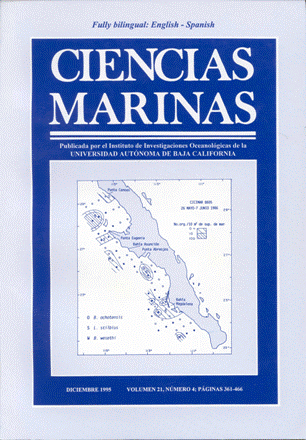Effect of density on growth and secondary production of Euvola (Pecten) ziczac juveniles, under suspended culture conditions
Main Article Content
Abstract
The effect of density on growth and secondary production of Euvola ziczac was studied under suspended culture conditions from June 1988 to January 1989. Seven different densities were examined, using juveniles from 9.6 k 0.3 mm long and 5.17 ± 0.6 mg dry weight, which were previously cultivated under hatchery conditions. The growth rate in size and biomass was relatively fast in the group containing 200 specimens/m2 (5.2 mm and 85.94 mg), followed by the lots with 400, 600 and 800 specimens/m2 (4.0 mm and 52.89 mg). The lots with 1,600, 2,400 and 3,200 specimens/m2 showed slow growth. The maximum biological load tolerated was found to be 120 ± 10 g/m2, after which individual growth slowed down and mortality increased. The highest secondary production was obtained in the group with 2,400 specimens/m2 (5.71 mg/m2/day). Density management during the nursery stage of E. ziczac is discussed.
Downloads
Article Details
This is an open access article distributed under a Creative Commons Attribution 4.0 License, which allows you to share and adapt the work, as long as you give appropriate credit to the original author(s) and the source, provide a link to the Creative Commons license, and indicate if changes were made. Figures, tables and other elements in the article are included in the article’s CC BY 4.0 license, unless otherwise indicated. The journal title is protected by copyrights and not subject to this license. Full license deed can be viewed here.

